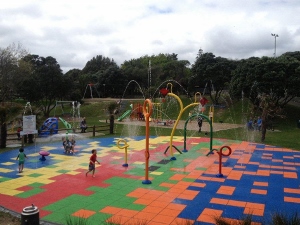

<p><img class=" alignright size-full wp-image-973" src="http://schoolnewsnz.fastrackdev.com/wp-content/uploads/2014/07/SND05-wk5-PROPERTY-Playground_safety.__300x225.jpg" alt="SND05-wk5-PROPERTY-Playground safety. 300x225" style="margin: 5px; float: right;" width="300" height="225" />Safety is paramount in a school playground, and as Justin Handley of PlayMatta explains, under New Zealand regulations every piece of equipment has to be certified with a critical fall height and a critical fall zone.</p>
<p> <!--more--> </p>
<p>&#8220;In terms of the fall height, it&#8217;s about protecting a child head from potential brain damage,&#8221; Mr Handley says.</p>
<p>&#8220;The critical fall zone is about making sure you are not putting dual use into the same space – such as a swing and a slide.</p>
<p>&#8220;Under the 2004 Playground Standard, all playground surfaces have to ensure they meet the critical fall height requirement and are independently tested to assess this.</p>
<p>&#8220;At Matta Products, we continue to test a number of tiles and shock pads from every batch produced to ensure the product leaving the factory continues to meet the required critical fall height&#8221;.</p>
<p>Other requirements for synthetic surfaces are that they must be slip resistant, for which they are tested in dry and wet conditions, fire resistant, and provide disabled access.</p>
<p>There are a number of different synthetic surfaces schools can choose from, Mr Handley says. They include synthetic grass, poured rubber and tiles.</p>
<p>&#8220;Poured rubber has been quite commonly used for playground surfaces, but over time it wears and can be aesthetically unattractive when patched. We&#8217;ve recovered a number of these surfaces with Play Matta tiles.&#8221;</p>
<p>However, as with every product, there are pros and cons with the tiles.</p>
<p>&#8220;The Play Matta tiles have holes in them to allow for expansion and contraction, but some people don&#8217;t like the holes because they get a build-up of debris and dirt in them. It doesn&#8217;t affect the fall height performance of the tiles and they can be cleaned out with an outdoor vacuum cleaner or water blaster. There are matting installations over 15 years old still going strong.&#8221;</p>
<p>An alternative to synthetic surfaces is loose fill, and this can be wood chips, bark or pea gravel, and all these also have to be certified, Mr Handley says.</p>
<p>&#8220;The big difference with loose fill products is that they require regular maintenance. For example, loose fill product under a swing will be displaced and leave a big depression, which has to be regularly filled in and smoothed over.</p>
<p>&#8220;The fill has to be at least 300mm deep to allow for displacement and still ensure head protection. Additionally bark or wood chip will mulch and therefore need to be regularly topped up which is an ongoing cost.</p>
<p>&#8220;Wood chip is better than bark as bark decomposes more quickly, but any type of loose fill provides challenges in terms of disabled access as well as an increase in the potential for contamination.&#8221;</p>
<p>Mr Handley says that loose fill is a lot cheaper initially, and many schools will choose that to start with because of budget constraints, but after five years or so, will often change to tiles for a maintenance- free, long-lasting surface.</p>
<p>In terms of safety, he says that since the standards were introduced in 2004, there has been an increasing emphasis on compliance.</p>
<p>&#8220;The industry, as a whole, has an emphasis on safety and people are conscientious about doing the right thing. It is rare to find a non-compliant piece of equipment or surfacing but it does still happen and schools should always ask for literature to back up any company&#8217;s claims.&#8221;</p>

NZCER found generative AI tools are frequently used to support teaching and learning in primary…
The Ministry decision to discontinue a reading resource over kupu Māori has angered the sector…
NCEA was designed to broaden educational success, explains David Pomeroy from the University of Canterbury.
More than just a break from the classroom, a visit to a zoo or wildlife…
Without proper maintenance and care, trees can become a hazard. Are your trees in need…
Loneliness and social disconnection negatively impact wellbeing. A new WHO report finds teens feel the…
This website uses cookies.